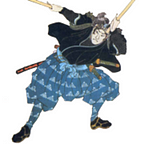The Gadget We Miss: The Motorola StarTAC
Motorola’s first clamshell phone was the must-have gadget of the late 1990s
Once upon a time, cell phones were clumsy and awkward devices. Some might argue that they still are, but back in the mid-1990s they were dumb as well: most couldn't do much more than make a phone call. That might have been okay if they looked cool, but instead phones like the Nokia 2120 were, well, functional is the polite way to put it. These chunky phones were most definitely not fashion accessories, and to use one on the street was to invite hoots of derision or unfavorable comparisons to Gordon Gekko. All that changed with the gadget we are looking at today: the Motorola StarTAC.
Announced in 1996, the Motorola StarTAC phone was everything that other phones were not: sleek, small and stylish. Described by the company as a “wearable cellular telephone”, it was the smallest, lightest cell phone in the world. It would fit into a small pocket and the clamshell design bore more than a passing resemblance to the communicators on Star Trek. It was the first phone to offer a discrete vibrate mode instead of an annoying ringer. In essence, It was a cell phone that you wouldn't mind being seen using.
Add all this up and you get an object of desire, which is why it was priced at a hefty $1000 in the USA and £1400 in the UK at launch.
Needless to say, it was a huge hit. The popularity continued later in the year when Motorola launched a version of the StarTAC that worked on the then-new GSM phone standard, which avoided the tricky problem of having your phone calls intercepted and recorded. These revised models also added an LCD screen that replaced the calculator-style display on the original model and the ability to send data at a then blistering speed of 9600 bits per second.
And users loved the StarTAC. They forgave the rather poor battery life from the slimline battery (Motorola claimed a talk time of 60 minutes , but that was rather optimistic) because it looked cool. If you wanted more talk time, you added a second battery on the back (a feature that I wish modern cell phones still had). It became a late 1990s status symbol, with TV ads where the phone was mysteriously hidden in a supermodels bikini and endorsements from Chinese pop stars.It also showed up in movies like 8mm (starring Nicholas Cage) and Jackie Brown, a sure sign that a gadget is approaching iconic status.
My personal memory of the StarTAC is owning a model in the late 1990s, when they had become cheaper. In particular, I recall the satisfying sproing noise that the extended antenna made when you flicked it. This antenna was also somewhat fragile: as a 2002 CNet review noted, it would easily snap off when extended. Needless to say, this was the eventual fate of my phone, and I replaced the phone after my antenna snapped off from an overly vigorous sproinging session. I wasn’t alone, as there now seems to be a good trade in replacement antennas on eBay.
The StarTAC brand lasted a remarkably long time, with updated models adding exotic features such as a color screen and better battery life over the years. But the brand began to fade in the early 2000s as users moved to phones that offered more features at the cost of size, such as Motorola’s own RAZR, which offered two big color screens and a camera. The last hurrah of the brand was the StarTAC III , launched in 2007 in South Korea. This did not prove to be a big seller, and Motorola retired the brand. In 2012, search giant Google bought Motorola’s mobile phone division, and are now planning to use the company to launch a new flagship Android Phone.
Still, an estimated 60 million StarTAC phones sold around the world isn't bad. Kudos to Motorola for creating a design that finally made cell phones something that real people would use, rather than the elite. And the StarTAC is not quite dead yet: In Finland the maverick design company Lekki is offering refurbished StarTACs for sale in a variety of colors. The yellow model will cost you €170 (about $220), so there is still a chance to bathe in that hipstery glow of retro happiness by buying a phone that defined the idea of a cell phone that you were not ashamed to use in public.
What are your memories of the Motorola StarTAC? Post a note on this story and you will be invited to join Medium and post your own memories of gadgets that we miss.
